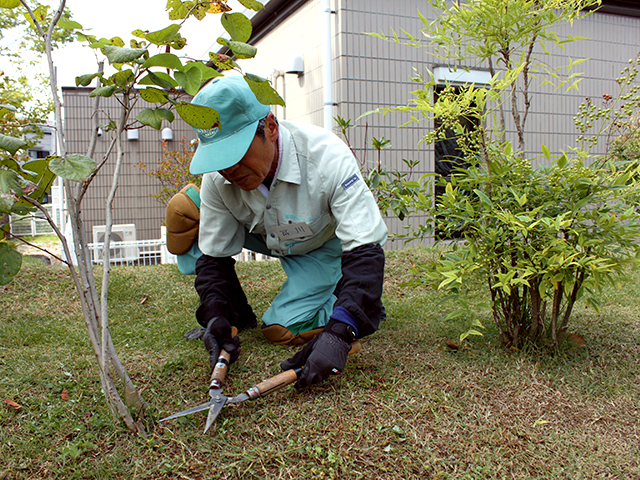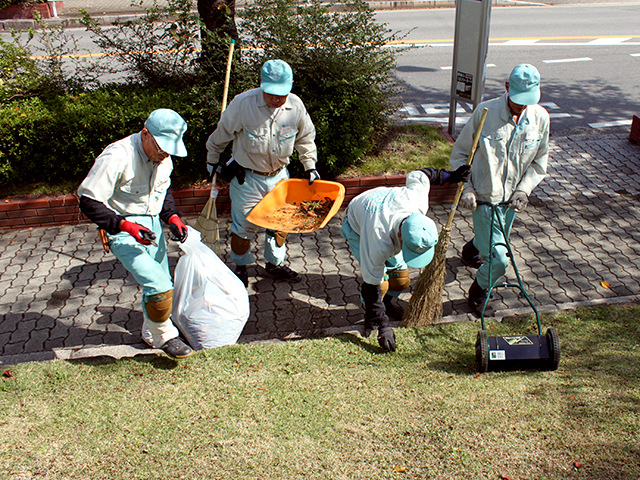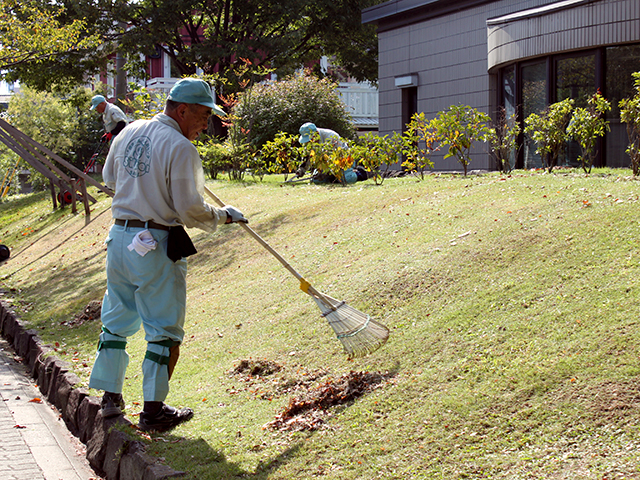Filtered By: Money
Money
Japan provides employment for aging population through Silver Human Resource Center
Text and Photos by DANESSA O. RIVERA, GMA News

Sakai Silver Human Resource Center project manager Takao Kotani explains to Southeast Asian reporters the history and what the center is all about.
All his life, Katayama Tatsuji, 73, worked as an architect until he reached the age of retirement. But that did not stop him from still working and serving his country.
Tatsuji currently works as a lead gardener in Daisen Park in Sakai City, Osaka prefecture with the help of a government program for senior citizens.
Like in the Philippines, Japanese citizens can work up to 65 years old as mandated by law.
"When we retire, the relationship with the community will be cut," he lamented.
"So we would like to keep the relation with society and we'd like to make a contribution to local community as well. We want to have the feeling of attachment to the society or community," he noted.
Japan is known to be the grayest nation in the world, with 25.9 percent of the total population are with ages 65 and over as of September 2014 estimates.

An elderly man demonstrating manual gardening work.
Reflecting its strong commitment to support its aging population, the Japanese government established the Silver Human Resource Center (SHRC) in Tokyo in 1974, Takao Kotani, project manager of Sakai Silver Human Resource Center, told Southeast Asian reporters.
"In Japan, Japanese society gives more chance to senior citizens up to 65 years old. They can work as an employed type of worker up to 65 years old," he said.
"The silver center is a national government program to provide opportunity for jobs for retired citizens," he added, noting any Japanese aged 60 years old can start working in the Silver Human Resource Center.
Currently, there are 1,300 centers all over Japan with over 700,000 members.
In particular, the silver center in Sakai City, Osaka prefecture—established in 1981—is the biggest one with over 6,500 members, Kotani said.
It provides 30 types of jobs ranging from housekeeping to gardening and members can work for a maximum of 10 hours, earning between ¥45,000 to ¥50,000 (P19,000 to P21,000) per month.


The group of elderly workers employed by Silver Human Resource Center finish up their work.
Kotani said job orders come from private companies, environmental agencies, and even households. Jobs include indoor and outdoor general work, facility administration, specialized knowledge, office work, customer interface and services.
"Senior citizens are open to learning new things, even if they had a different career before," he said.
Ichiro Nijima, 72, was an engineer at an electric appliance company and is now working as the lead gardener at Daisen Park.
He joined the Silver Human Resource Center for health and social reasons.
"[I work for] health reasons, to keep ourselves fit. We would also like to have friends," Nijima said.
However, Kotani said they find it a bit hard to convince some elderly Japanese to continue working due lack of job security.


Park clean up at Daisen Park, one of the jobs available at Sakai Human Resource Center.
"The system is quite difficult for senior citizens because there is no complete employment agreement between Silver Centre and companies. They would like to secure their employment so it's a bit difficult for them," he said.
In addition to that, Kotani said some customer companies are also worried of very old workers.
"The oldest age working here is 90 years old, cleaning for two hours a day in a building," he shared.
Though the job system is not secure, Tatsuji said earning extra cash at an old age gives him happiness and self-importance.
"We have pension system, but we're very happy to get extra money by joining in the community. Through those, I can give small presents to my grandchildren."
"Also, I would like to become more active and healthier and as a member of a community, I want to work until I die," he concluded. — VC, GMA News
The media tour for the 2014 Sakai ASEAN Week from October 7 t0 13 was organized and sponsored by the city government of Sakai in cooperation with several private groups.
More Videos
Most Popular



